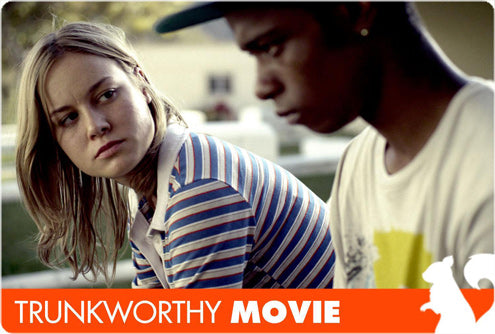This article is from our friends at Trunkworthy
Richard Pryor, Harvey Keitel, Yaphet Kotto, and 1970s Detroit through the lens of Taxi Driver‘s screenwriter. No movie captures so viscerally the dehumanizing forces of the factory.
If ever there was an underrated gem of a film to make you feel vibrantly bleak about humanity, to titillate you with the sad wonder of human existence and the intense, exquisite agony of it all, Blue Collar is it. Paul Schrader got to direct the film on the strength of his screenplay for the little 1976 number that broke him: Taxi Driver. For Blue Collar, he wrote the script with his brother Leonard. And while many have tried to portray the working-class experience, few have gotten so right the humbling desperation, the anger and frustration of the factory, as every screw that turns, turns against you.
Blue Collar is the story of three autoworkers, Zeke (Richard Pryor) Jerry (Harvey Keitel) and Smokey (Yaphet Kotto.) Lost in their own lives, minds dulled by hard repetitive labor, disgruntled by heartless, polluting employers and a corrupt union deeply in bed with management, they party 1970s Detroit-style, knowing no one has their interest at heart, mindless but not unaware. Once, when their wives are gone, they come up with a shoddily conceived plan to rob their union’s safe. The take is paltry, but they soon realize they’ve stumbled upon evidence of an illegal loan scheme. Meanwhile, in keeping with its distinctly criminal character, the union officially claims to have been relieved of $10,000 in the heist when the workers know they only lifted $600. The Feds intervene, along with company thugs and union heavies, and things go badly for the hapless heroes.
Filmed at a car factory in Kalamazoo, Michigan, one that in real life spat out Checker cabs, the plant stood in for the Detroit operation of an unspecified, larger and more dastardly carmaker than Checker, they of fond memory. With additional shooting in and around the Motor City and Ford’s River Rouge plant, Blue Collar was a gritty, suspenseful peek into 20th-century industrial life, its astutely judged visuals animated by bravura performances from a great, interracial cast of actors on their way up. (In the days before buddy movies reigned supreme, on-screen friendships between black and white working-class characters were still rare.)
Reportedly feuding bitterly amongst themselves off camera—at least in part a result of Pryor’s Force Five cocaine habit—the tension between the actors plainly didn’t hurt the broth, although friction with Pryor was said by Schrader to have resulted in his own subsequent nervous breakdown. Still relatively young and already crazed, but nowhere near as famous as he would become, Pryor’s performance as a bewildered production line cog is breathtaking and bookended for haunted majesty by the smoldering (and also young) Harvey Keitel and Yaphet Kotto, at his formidable most.
Sparks fly in Blue Collar, like the hot metal ones showering down from welding machines in the steamy and dangerous places in which generations of autoworkers spent most of their days laboring. It’s all ably captured by cinematographer Bobby Byrne and intensified by the stark, electric soundtrack.
Men, women, sex, drugs, booze, friendship, betrayal, and a backdrop of big, noisy, dangerous heavy machinery, crappy snack-dispensing machines, the full equipage of assembly line life is found in Blue Collar. Love, hate, courage, cowardice, human strength and human frailty, it’s all here in a film that is hardly without comedy yet ultimately sad to the bone.
MORE FROM TRUNKWORTHY:
 |
 |
 |
| The Elvis Costello Song of the Week Shows His Bona-Fide Soul Side | American Splendor: A Masterpiece of Life-Affirming Misanthropy | Short Term 12: The First in Our "Good Cry Without Manipulation" Series |









